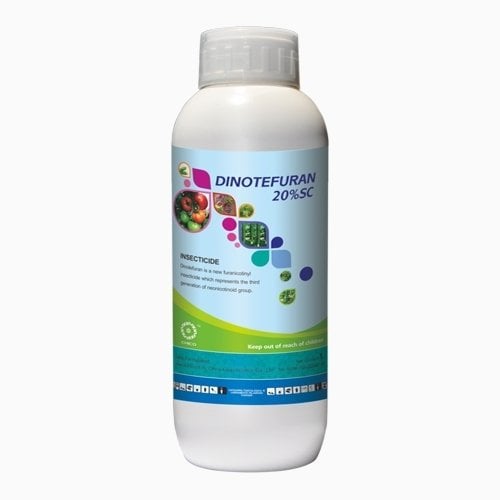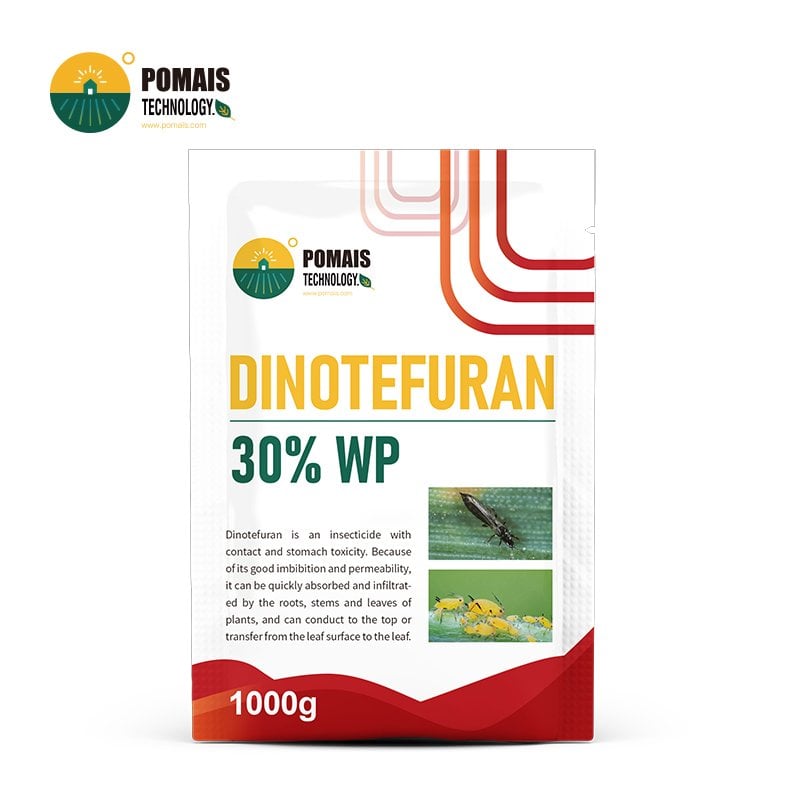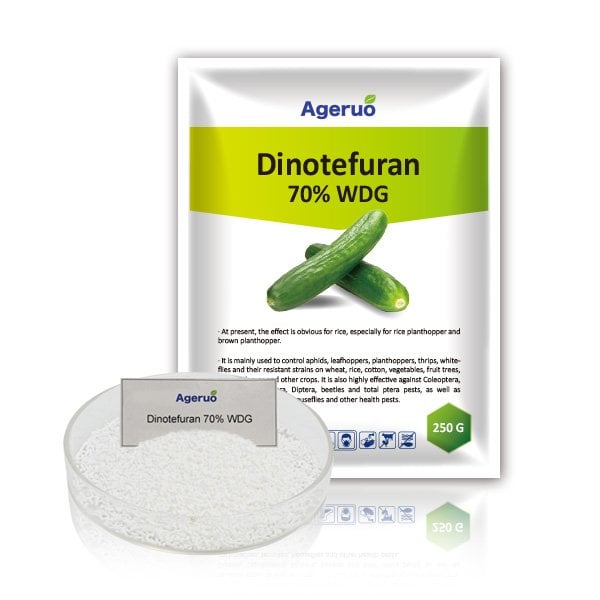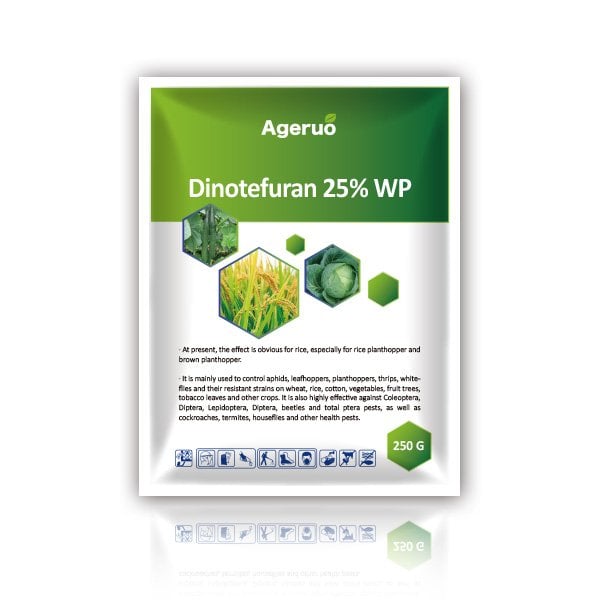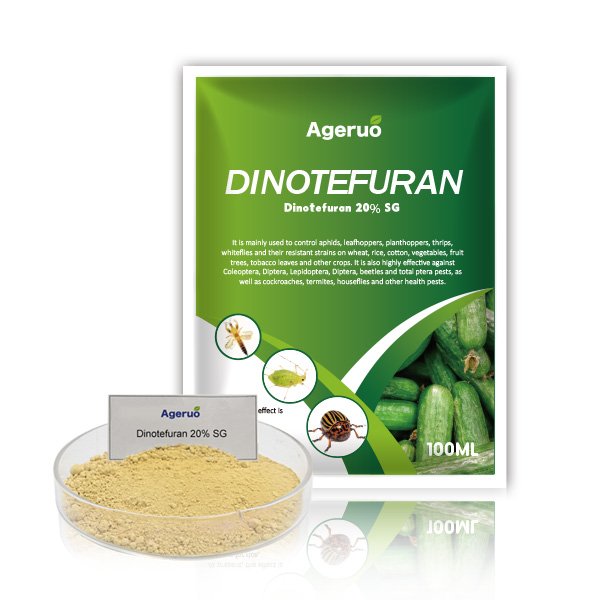How is Dinotefuran for Bed Bug Control?
Bed bugs are one of the most stubborn and challenging pests to control. These nocturnal pests hide in cracks and crevices, feeding on human blood, often leaving itchy bites behind. For those seeking an effective solution, Dinotefuran has emerged as a potent option for controlling bed bug infestations. In this article, we will explore how Dinotefuran works to eliminate bed bugs, its application methods, and why it is an excellent choice for pest control.
What is Dinotefuran?
Dinotefuran is a systemic insecticide in the neonicotinoid class. Known for its effectiveness in pest control, it targets the nervous system of insects, disrupting their ability to transmit nerve signals. This disruption leads to paralysis and, eventually, the death of the pest. While Dinotefuran is often used for agricultural pests, it also shows strong efficacy in controlling household pests, including bed bugs.
Unlike some insecticides, Dinotefuran works not only on contact but can also be absorbed through the insects’ exoskeletons, making it effective in controlling bed bugs that are difficult to reach or treat.
How Does Dinotefuran Work on Bed Bugs?
Bed bugs are known for their ability to hide in small, hard-to-reach areas like cracks in furniture, mattresses, and wall voids. This behavior makes it difficult for traditional insecticides to fully eradicate an infestation. Here’s how Dinotefuran can help:
-
Systemic Action: When applied to a bed bug-infested area, Dinotefuran can be absorbed through the bed bugs’ bodies. This systemic action allows the insecticide to travel through the pest’s body, leading to its paralysis and death.
-
Contact and Ingestion: Bed bugs come into contact with the insecticide through direct exposure or when they ingest it while feeding. Since bed bugs feed on human blood, any blood meal consumed in an area treated with Dinotefuran will help to spread the insecticide through the bed bug population.
-
Long-Lasting Effects: Dinotefuran provides long-lasting protection. Once applied, it can continue to work for several weeks, killing both adult bed bugs and any newly hatched nymphs that come into contact with the treated areas.
Why Choose Dinotefuran for Bed Bug Control?
There are several reasons why Dinotefuran is an excellent choice for eliminating bed bugs:
1. Broad-Spectrum Pest Control
Dinotefuran is effective against a range of pests, including bed bugs, cockroaches, and ants. Its versatility makes it a go-to solution for households and businesses looking to eliminate multiple pests.
2. Effective in Hard-to-Reach Areas
Bed bugs are notorious for hiding in small, inaccessible spaces. Dinotefuran’s systemic action and ability to be applied as a spray or dust make it easier to reach these hidden areas and provide comprehensive coverage.
3. Quick Action
Bed bugs can reproduce rapidly, which makes timely treatment crucial. Dinotefuran acts quickly upon contact or ingestion, eliminating bed bugs before they have a chance to spread or reproduce.
4. Minimal Toxicity to Humans and Pets
When used as directed, Dinotefuran is considered to be relatively safe for humans and pets. It is essential to follow all safety guidelines to minimize exposure, especially when applying the insecticide in sensitive areas such as bedding or living spaces.
How to Use Dinotefuran for Bed Bugs
To effectively control a bed bug infestation, proper application is crucial. Here’s how to apply Dinotefuran for bed bugs:
1. Preparation
Before applying Dinotefuran, thoroughly clean the infested areas. Wash bedding, linens, and clothing in hot water and dry them on the highest heat setting. Vacuum floors, mattresses, and any cracks and crevices where bed bugs may be hiding.
2. Application Methods
Dinotefuran comes in various forms, including sprays, granules, and dusts. Depending on the formulation, here’s how to apply it:
-
Spray: For bed bugs, spraying is the most common application method. Use a sprayer to apply Dinotefuran to affected areas like bed frames, baseboards, cracks, and crevices. Be sure to target places where bed bugs hide, such as seams of mattresses and furniture joints.
-
Dust: Dust formulations of Dinotefuran can be used for areas where spraying may not be feasible. Lightly dust cracks, crevices, and electrical outlets where bed bugs may be hiding.
-
Bait: Though less common for bed bug control, bait formulations can also be used in some cases. Bed bugs may ingest the insecticide when they come into contact with the bait.
3. Reapplication
In cases of severe infestations, reapplication may be necessary. Bed bugs have a life cycle that includes eggs, nymphs, and adults. To ensure full eradication, apply Dinotefuran every 7–14 days to break the cycle.
Safety Precautions
Although Dinotefuran is effective, it’s essential to take proper safety precautions when using it to control bed bugs:
- Ventilate the Area: After applying the insecticide, ensure the treated area is well-ventilated to prevent the buildup of fumes.
- Avoid Direct Contact: Wear protective gloves and masks during application to avoid direct contact with the chemical.
- Keep Pets and Children Away: Keep children and pets out of the treated areas until the insecticide has dried or settled.
Conclusion
Dinotefuran is a highly effective solution for controlling bed bug infestations. Its systemic action, ability to target hidden bugs, and long-lasting effects make it a powerful tool for eliminating bed bugs. By following the proper application methods and safety precautions, you can successfully eradicate bed bugs from your home or business.
If you’re dealing with a persistent bed bug problem, consider Dinotefuran as a viable option for fast, reliable control.
Bed bugs are one of the most stubborn and challenging pests to control. These nocturnal pests hide in cracks and crevices, feeding on human blood, often leaving itchy bites behind. For those seeking an effective solution, Dinotefuran has emerged as a potent option for controlling bed bug infestations. In this article, we will explore how Dinotefuran works to eliminate bed bugs, its application methods, and why it is an excellent choice for pest control.
What is Dinotefuran?
Dinotefuran is a systemic insecticide in the neonicotinoid class. Known for its effectiveness in pest control, it targets the nervous system of insects, disrupting their ability to transmit nerve signals. This disruption leads to paralysis and, eventually, the death of the pest. While Dinotefuran is often used for agricultural pests, it also shows strong efficacy in controlling household pests, including bed bugs.
Unlike some insecticides, Dinotefuran works not only on contact but can also be absorbed through the insects’ exoskeletons, making it effective in controlling bed bugs that are difficult to reach or treat.
How Does Dinotefuran Work on Bed Bugs?
Bed bugs are known for their ability to hide in small, hard-to-reach areas like cracks in furniture, mattresses, and wall voids. This behavior makes it difficult for traditional insecticides to fully eradicate an infestation. Here’s how Dinotefuran can help:
-
Systemic Action: When applied to a bed bug-infested area, Dinotefuran can be absorbed through the bed bugs’ bodies. This systemic action allows the insecticide to travel through the pest’s body, leading to its paralysis and death.
-
Contact and Ingestion: Bed bugs come into contact with the insecticide through direct exposure or when they ingest it while feeding. Since bed bugs feed on human blood, any blood meal consumed in an area treated with Dinotefuran will help to spread the insecticide through the bed bug population.
-
Long-Lasting Effects: Dinotefuran provides long-lasting protection. Once applied, it can continue to work for several weeks, killing both adult bed bugs and any newly hatched nymphs that come into contact with the treated areas.
Why Choose Dinotefuran for Bed Bug Control?
There are several reasons why Dinotefuran is an excellent choice for eliminating bed bugs:
1. Broad-Spectrum Pest Control
Dinotefuran is effective against a range of pests, including bed bugs, cockroaches, and ants. Its versatility makes it a go-to solution for households and businesses looking to eliminate multiple pests.
2. Effective in Hard-to-Reach Areas
Bed bugs are notorious for hiding in small, inaccessible spaces. Dinotefuran’s systemic action and ability to be applied as a spray or dust make it easier to reach these hidden areas and provide comprehensive coverage.
3. Quick Action
Bed bugs can reproduce rapidly, which makes timely treatment crucial. Dinotefuran acts quickly upon contact or ingestion, eliminating bed bugs before they have a chance to spread or reproduce.
4. Minimal Toxicity to Humans and Pets
When used as directed, Dinotefuran is considered to be relatively safe for humans and pets. It is essential to follow all safety guidelines to minimize exposure, especially when applying the insecticide in sensitive areas such as bedding or living spaces.
How to Use Dinotefuran for Bed Bugs
To effectively control a bed bug infestation, proper application is crucial. Here’s how to apply Dinotefuran for bed bugs:
1. Preparation
Before applying Dinotefuran, thoroughly clean the infested areas. Wash bedding, linens, and clothing in hot water and dry them on the highest heat setting. Vacuum floors, mattresses, and any cracks and crevices where bed bugs may be hiding.
2. Application Methods
Dinotefuran comes in various forms, including sprays, granules, and dusts. Depending on the formulation, here’s how to apply it:
-
Spray: For bed bugs, spraying is the most common application method. Use a sprayer to apply Dinotefuran to affected areas like bed frames, baseboards, cracks, and crevices. Be sure to target places where bed bugs hide, such as seams of mattresses and furniture joints.
-
Dust: Dust formulations of Dinotefuran can be used for areas where spraying may not be feasible. Lightly dust cracks, crevices, and electrical outlets where bed bugs may be hiding.
-
Bait: Though less common for bed bug control, bait formulations can also be used in some cases. Bed bugs may ingest the insecticide when they come into contact with the bait.
3. Reapplication
In cases of severe infestations, reapplication may be necessary. Bed bugs have a life cycle that includes eggs, nymphs, and adults. To ensure full eradication, apply Dinotefuran every 7–14 days to break the cycle.
Safety Precautions
Although Dinotefuran is effective, it’s essential to take proper safety precautions when using it to control bed bugs:
- Ventilate the Area: After applying the insecticide, ensure the treated area is well-ventilated to prevent the buildup of fumes.
- Avoid Direct Contact: Wear protective gloves and masks during application to avoid direct contact with the chemical.
- Keep Pets and Children Away: Keep children and pets out of the treated areas until the insecticide has dried or settled.
Conclusion
Dinotefuran is a highly effective solution for controlling bed bug infestations. Its systemic action, ability to target hidden bugs, and long-lasting effects make it a powerful tool for eliminating bed bugs. By following the proper application methods and safety precautions, you can successfully eradicate bed bugs from your home or business.
If you’re dealing with a persistent bed bug problem, consider Dinotefuran as a viable option for fast, reliable control.

